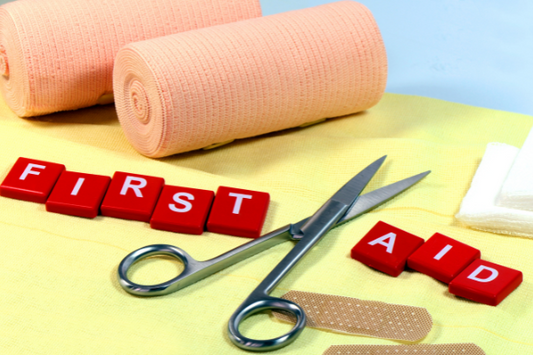Button batteries – little shiny discs that power everything from remotes and toys to keys, and hearing aids – are everywhere in our homes.

While they may seem harmless, around 200 children are admitted to hospital each year for button battery insertion-mouth, ears, nose and bottoms.
Royal Australian College of General Practitioners report 3 Aussie kids have died from swallowing button batteries since 2013.
As parents, grandparents, and educators, it's essential to understand the extreme risk from button batteries, and take proactive steps to protect the kids in your care.
This blog post is an eyeopener, and will help you keep your space safe.
What are Button Batteries?

Button batteries, or “coin batteries”, are small silver, round batteries used routinely in a wide range of household items.
Think about the remotes for your TV, musical birthday cards you receive, or even the talking toys your child loves.
These everyday items, along with many others like car keys, thermometers, and calculators, hide button batteries.
Kids love small shiny things, and as we all know, babies, toddlers and young kids test the world with their mouth.
This curiosity has devastating consequences when a child swallows or inserts a button battery.
Dangers Associated with Button Batteries

If a button battery is swallowed or inserted into the nose or ear, life threatening burning of surrounding tissue begins in under 15 minutes.
When a button battery comes into contact with moist tissue, like in the esophagus or nasal passages, it creates an electrical current.
This current triggers a chemical reaction that produces hydroxide, a caustic substance that can burn through tissue within as little as two hours.
The resulting injuries can include:
- Severe burns: These burns can damage the esophagus, trachea, vocal cords, and other internal organs.
- Internal bleeding: The battery can eat through blood vessels, causing internal bleeding.
- Long-term complications: Even after the battery is removed, children may experience complications like swallowing difficulties, vocal cord damage, and breathing problems.
Symptoms of Button Battery Ingestion
It is essential that you learn what to look out for. Your little one who has swallowed a button battery may show the following symptoms:
- Coughing or gagging
- Drooling
- Difficulty swallowing
- Chest pain
- Abdominal pain
- Vomiting
- Nosebleeds (if inserted in the nose)
- Ear pain or discharge (if inserted in the ear)
If you suspect your child has ingested a button battery, seek immediate medical attention.
New Safety Features
Good News! There's a growing movement to improve button battery safety.
Researchers and manufacturers are exploring innovative designs and packaging to reduce the risk to children. Some of these innovations include:
- Bitrex™ coating: This extremely bitter substance is being applied to batteries to deter children from putting them in their mouths. Kidsafe Australia is actively involved in promoting this technology. https://www.duracell.com.au/technology/lithium-coin-battery-safety/
- Blue Dye: Some Energizer batteries now feature “Colour Alert”. Blue dye coating on button batteries provides instance evidence of ingestion.
- Secure battery compartments: Manufacturers are designing devices with more secure battery compartments that require tools to open, making it harder for children to access the batteries. The ACCC has been instrumental in pushing for mandatory standards for button battery safety.
- Child-resistant packaging: New packaging designs are being developed to make it more difficult for children to open battery packages.
Do not Delay if Ingestion Occurs
If you suspect your bub has swallowed a button battery, every second counts. Here's what to do:
- Call 000 for an ambulance immediately.
- If the child is over 1 year old, give them honey. Currentt research from the Royal Children's Hospital Melbourne has shown giving honey can help reduce the severity of tissue damage while waiting for medical assistance. Use 2 teaspoons of honey every 10 minutes until you reach the hospital.
- Do not give your child anything else to eat or drink.
- Do not try to get them to vomit.
- Make sure you bring the item the battery came out of to hospital. This will help medical professionals identify the type of battery and provide the appropriate treatment.
Real-Life Stories and Lessons
Sadly, there have been tragic cases in Australia where children have suffered severe injuries and died as a result of button battery ingestion.
The Sydney Children's Hospitals Network reference many cases where children have required multiple surgeries and suffered serious long-term complications after swallowing button batteries.
Sharing these stories brings awareness to the very real dangers of these shiny buttons.
Prevention Steps for Parents and Caregivers
Prevention is essential. Use this guide to check your space.
- Keep all devices containing button batteries out of reach of children. This includes remotes, key fobs, watches, hearing aids, and toys.
- Check battery compartments regularly. Make sure the compartments are secure and that the screws are tightened.
- Store spare button batteries in a secure location, out of sight and reach of children. Consider using a locked container or a high shelf.
- Teach children about the risks of button batteries. Show your kids what can happen if old enough. Pictures speak louder than words.
- Supervise children closely, especially when they are playing with toys that contain button batteries.
- Recycle used button batteries immediately and safely. Tape both sides of the battery and take it to a battery recycling center.
Button batteries really are everywhere. Think hard! Can you think of button battery hiding spots that we haven't mentioned?
Take extra care when you visit new places and homes, remain alert at all times, especially with new toys coming this christmas season
Remember, awareness and education are vital in preventing button battery-related injuries.
Take action today to protect the children in your life:
- Do a button battery safety check in your home today.
- Share this information with other parents, grandparents, and caregivers.
- Definitely take a childcare first aid course.
Please share this information. You might save a life.
- **Kidsafe Australia** - Offers comprehensive safety resources and guidelines for preventing injuries.
[kidsafe.com.au](https://www.kidsafe.com.au)
- **Australian Competition and Consumer Commission (ACCC)** - Provides product safety information and guidelines.
[productsafety.gov.au](https://www.productsafety.gov.au)
- **Sydney Children's Hospitals Network** - Source of expert medical advice and child safety tips.
[sch.health.nsw.gov.au](https://www.schn.health.nsw.gov.au)
- **Royal Children’s Hospital Melbourne** - Offers resources on child health and safety, including the management of ingestion injuries.
[rch.org.au](https://www.rch.org.au)
- **Healthdirect Australia** - Reliable source of health-related information and first aid advice.
[healthdirect.gov.au](https://www.healthdirect.gov.au)
- RACCG https://www1.racgp.org.au/ajgp/2022/july/button-battery-injury
- Parents: https://www.parents.com/energizer-announces-new-3-in-1-child-shield-battery-8683134


















